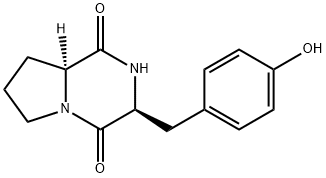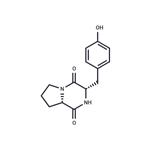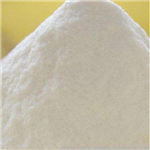Description
Maculosin is a diketopiperazine metabolite produced by
A. alternata, L. capsici, Streptomyces, and the Gram-negative, nonobligate predator bacterial strain 679-2. It acts as a host-specific phytotoxin, inducing formation of weeping necrotic lesions in leaves of spotted knapweed (
C. maculosa) when used at a concentration of 10 μM. Maculosin reduces the growth of the plant pathogenic bacteria
X. axonopodis and
R. solanacearum (MICs = 31.25 μg/ml) as well as the pathogenic oomycetes
P. cactorum, P. capsici, P. cinnamomi, P. infestans, and
P. ultimum when used at concentrations ranging from 10 to 100 mg/ml. Maculosin also inhibits the growth of
M. luteus, M. smegmatis, S. cerevisiae, C. albicans, C. neoformans, and
A. niger when used in combination with pyrrolnitrin or banegasin.
Uses
Cyclo(L-Pro-L-Tyr) (maculosin) is a diketopiperazine formed by the fusion of tyrosine and proline, reported as a secondary metabolite of fungi and bacteria. In Pseudomonas aeruginosa, cyclo(L-Pro-L-Tyr) is capable of activating N-acylhomoserine lactones (AHLs). Cyclo(L-Pro-L-Tyr) is also capable of activating or antagonizing other LuxR-based quorum-sensing systems. While the mode of action of cyclo(L-Pro-L-Tyr) is not known, its activity suggests the existence of cross talk among bacterial signalling systems. Cyclo(L-Pro-L-Tyr) was identified as a host-specific toxin produced by Alternaria alternata on spotted knapweed.




